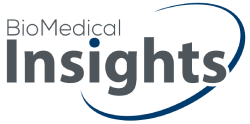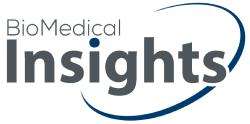A pre-IPO biopharma had two very novel early-stage products in the clinic for high unmet need, rare, dermatologic conditions. While promising, the MoA of these products was risky (no clinical proof-of-concept), and the company was seeking to diversify its pipeline by on-boarding another program with a more established, lower risk mechanism and potentially targeting larger markets. The company chose a unique immune target, with potential pathologic significance in a wide range of autoimmune and inflammatory diseases, supported via its role in an established pathway targeted successfully by several approved therapeutics. The company had tested potential lead small molecules, in established preclinical models, with good results. The company was at a stage where it would need to make significant additional investments in the program and would need to disclose or “sell” the program to its investors.
The head of business development reached out to BMI to help the company identify, prioritize, and characterize the most favorable potential indications, providing a solid-footing upon which to determine whether, and how, to move the program forward.
BMI Approach
BMI and the client agreed that the new development program, to move forward, would require buy-in from all functional areas of the company—commercial, development, scientific (chemistry) and regulatory. As such, BMI recommended an iterative, multi-step process, to give key stakeholders opportunities to provide input and feedback on the research and analytic process, and forums to develop internal consensus.
Briefly, the project included the following steps:
Step 1: Set project objectives, determine criteria, and select potential indications
During a project kick-off meeting, BMI and the client agreed on the project objectives, and indication evaluation criteria for prioritization.
The client provided BMI with an internal list of potential indications, determined based on the therapeutic target and mechanism of action. BMI reviewed the internally-generated list of 30 indications and worked with the client to refine the list—eliminating indications with poor or limited biologic rationale and/or very small market potential. BMI relied on its extensive experience with many of the indications and targeted secondary market research to efficiently refine the list.
Step 2: Develop high level characterization of indications
BMI characterized, at a high level, for each indication of interest (n=25): Epidemiology and patient population size; treatment; unmet need; competition (current and future); biologic rationale (for client’s product); development pathway and feasibility; high-level market potential.
BMI relied on secondary sources (epidemiologic, clinical and scientific literature, analyst reports, clinical trial databases, company materials), along with a very select group of KOLs who had translational research focus in the immunologic pathway being targeted.
Step 3: Narrow indication list
Based on a high-level characterization of each indication, BMI prepared a summary deliverable with findings and recommendations (specifically, most favorable indications considering ratings and rankings of unmet need, competition, biologic rationale, development feasibility and market size).
BMI reviewed the results during a workshop with the client, allowing relevant stakeholders to provide input, and to discuss the pros and cons, and unknowns, of different options.
Together, BMI and the client narrowed the initial list to n= 7 “most favorable” indications
Step 4: Conduct more in-depth research and analysis of “favorable” indications
For the most favorable indications, BMI conducted additional primary research, with top-tier KOLs in each indication. To supplement the interviews, BMI conducted in-depth secondary research, including a deep dive into the biologic plausibility of the therapeutic target, by indication, the development pathway and feasibility, and, for market potential, relevant “comps”.
Step 5: Prioritize best indications and delineate next steps
BMI prepared a deliverable characterizing each indication, and comparing the various indications based on the evaluation criteria.
We held a workshop / summary meeting to review and discuss our findings with the key client stakeholders. BMI and the client, arrived at a consensus for two different “groups” of potential indications, each of which meets the criteria of having significant unmet need, a solid biologic rationale, feasible development, including the potential for early proof-of-concept, and favorable market potential. The project provided critical direction and a strong rationale for further investment.



